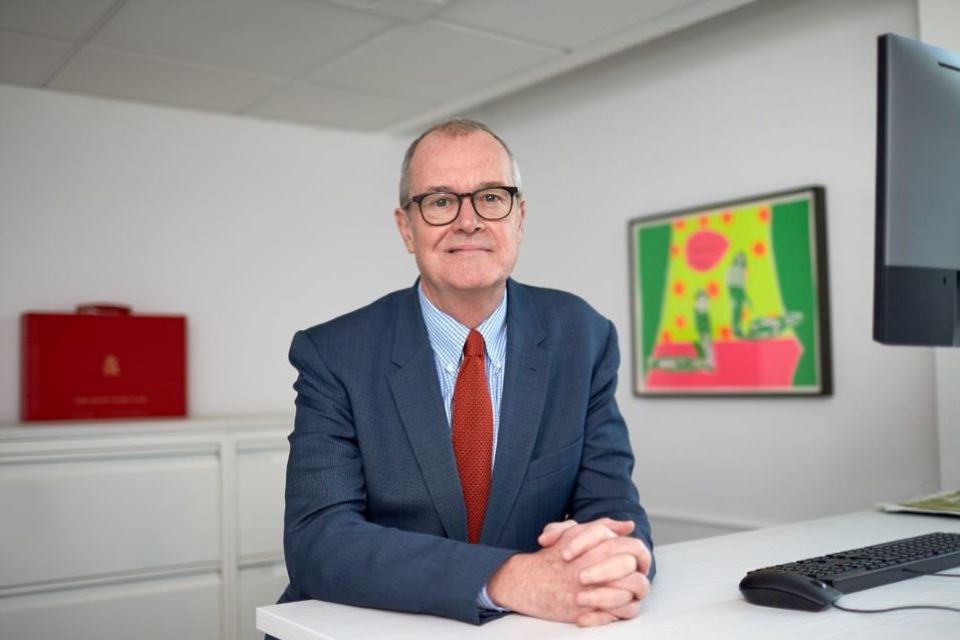It’s not true COVID-19 modellers look only at worst outcomes
This piece was originally published in The Times on 24 December 2021.

We are in an uncertain and potentially dangerous phase of the pandemic. A new variant, Omicron, has emerged and it has mutations that make it appear different to the immune system. It is spreading fast and has the capacity to escape at least part of the protection offered by vaccines. Across the world scientists are trying to work out what all this means, the impact of lower severity and what the effects of different interventions might be.
Vaccinology tells us that vaccine boosters are important to restore protection. Virology is picking up differences in the speed the virus replicates in the airways and lung tissues. Epidemiology is giving insight into rates, speed and extent of spread across different parts of the population. At the same time, monitoring of clinical data is trying to get a good fix on the severity of disease caused by Omicron. Our behaviours and mixing patterns have changed and will affect in complex ways how the virus moves through the population.
With so many different factors in play, epidemiological modellers have an unenviable task in trying to make sense of all this. They are trying to model lots of different scenarios of how the wave of Omicron might grow, determine which factors are likely to have the biggest impact on spread and its consequences, and to assess how different interventions might alter the outcomes.
The modellers always have to make assumptions and do so across a wide range of possibilities, some optimistic and some pessimistic. They do not, contrary to what you might have heard, only model the worst outcomes. They will make assumptions about vaccine effectiveness, they will model different levels of viral transmission, mixing patterns and different levels of disease severity. The range of assumptions modelled can be very broad; for disease severity for Omicron one model explored a range from 10 per cent of Delta severity through to 100 per cent.
For immunity a range of assumptions on vaccine efficacy, speed of vaccine rollout and vaccine coverage in different parts of the population were explored. It is not surprising that the outcomes from the models describe a very wide range of possible effects on infection levels, hospitalisations, hospital occupancy and death. But all of the modelling showed that with the growth rates of infection being seen the outlook was not good; a conclusion reached by many other groups across the world including the World Health Organisation. Vaccine boosters are crucial.
All of the information from behavioural science through to immunology, modelling and virology, together with input from scientists from around the world comes to the SAGE committee and its job is to try to turn this into advice for ministers.
It is not the job of SAGE to take a particular policy stance or to either spread gloom or give Panglossian optimism. Ministers and the cabinet need to hear the information whether uncomfortable or encouraging. They of course need to factor it in to all the other information that provides inputs to policy decisions. SAGE does not provide dogmatic answers or directives, it provides information, advice, scenarios and helps determine possible consequences of actions. Part of the advice may contain a “reasonable worst case scenario” – data that are often seized upon.
But they are just that – a reasonable worst case scenario and one of many possible outcomes and trajectories presented to ministers for planning purposes and decision making.
Science has served us extraordinarily well during this pandemic and has given us many insights as well as new diagnostics, vaccines and therapeutics. Science is self-correcting, and advances by overturning previous dogma and challenging accepted truths. Encouraging a range of opinions, views and interpretation of data is all part of the process. No scientist would ever claim, in this fast-changing and unpredictable pandemic, to have a monopoly of wisdom on what happens next.
Equally, those who want to engage seriously with a debate that affects us all need to consider all the data in the round, not only those parts that fit an argument while ignoring the rest. That is not science, even though it might sometimes make an entertaining read.
Often the job of scientific advice is to allow ministers to understand both a central case and the uncertainty surrounding it, what drives that uncertainty and when the uncertainty might be reduced. Speaking scientific truth to power is a difficult but necessary part of the democratic process if ministers are to be able to make an informed decision. This is what SAGE does.